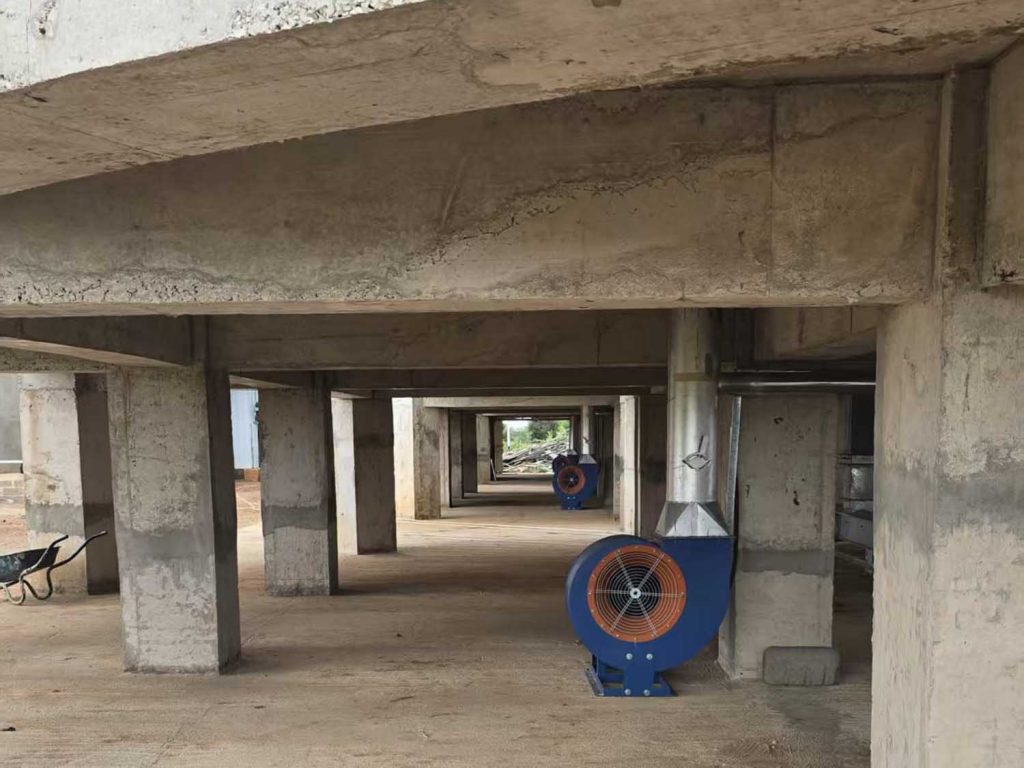Scientific ventilation design ensures grain storage safety. Every storage company must carefully consider this issue. Flat-bottom silos offer clear advantages like low construction costs and large capacity. Thus, they are widely used in grain storage. Their ventilation design plays a key role in preserving grain quality and reducing losses.
Ventilation Design for Flat-Bottom Silos
Fan and Outer Ring Duct
Fans serve as the main power source for the ventilation system. Their performance directly determines the ventilation effect. Engineers must accurately calculate the duct layout and size based on silo capacity and grain type. This ensures air distributes evenly throughout the entire grain pile.

Ventilation Cover Plates
Ventilation cover plates evenly distribute air. They can also bear the weight of grain to some extent. This design makes the ventilation system more stable and reliable. These plates are usually made of high-strength materials. This ensures good ventilation and extends service life. Proper arrangement of the plates effectively avoids dead zones. Air can then penetrate every corner of the grain mass.
Technical Details of Ventilation Design
Precise Configuration of Air Volume and Pressure
Air volume determines the airflow speed through the grain. Air pressure affects whether air can penetrate the grain layer effectively. Engineers must also consider grain resistance and duct friction losses when designing air pressure. This guarantees efficient operation of the ventilation system.
Flexible Choice of Ventilation Modes
The design should select suitable ventilation modes according to different storage needs. Common modes include cooling ventilation, drying ventilation, and equalization ventilation. Cooling ventilation mainly lowers grain temperature and reduces respiration. Drying ventilation removes excess moisture through airflow. Equalization ventilation balances internal temperature and humidity differences.
Combining Natural and Mechanical Ventilation
Designs often combine natural and mechanical ventilation for better results. When weather conditions permit, using natural wind saves energy and protects the environment. Mechanical ventilation provides stronger control when rapid adjustment of temperature or humidity is needed. This combination improves system flexibility and reduces operating costs.